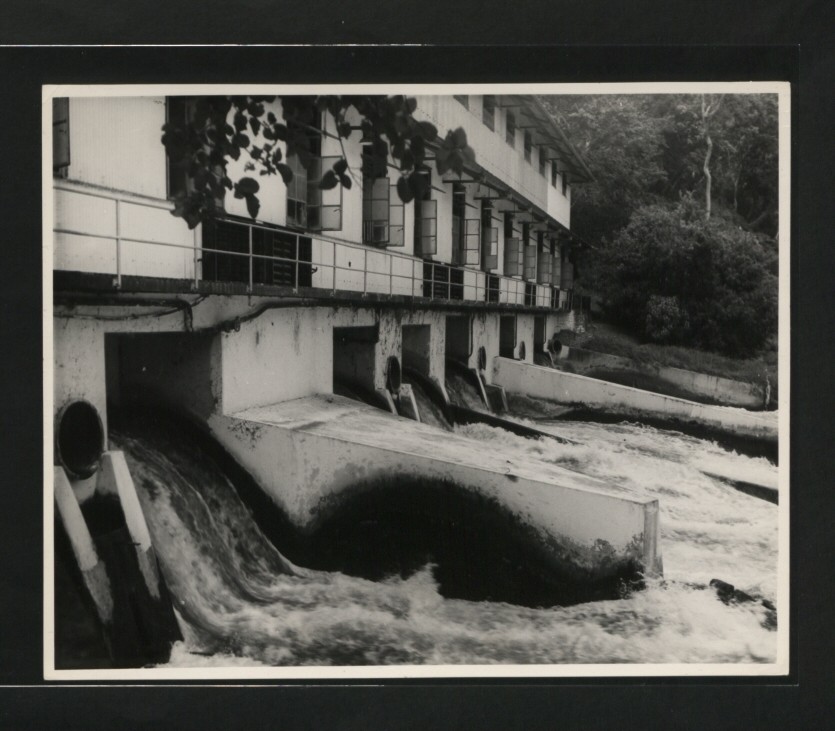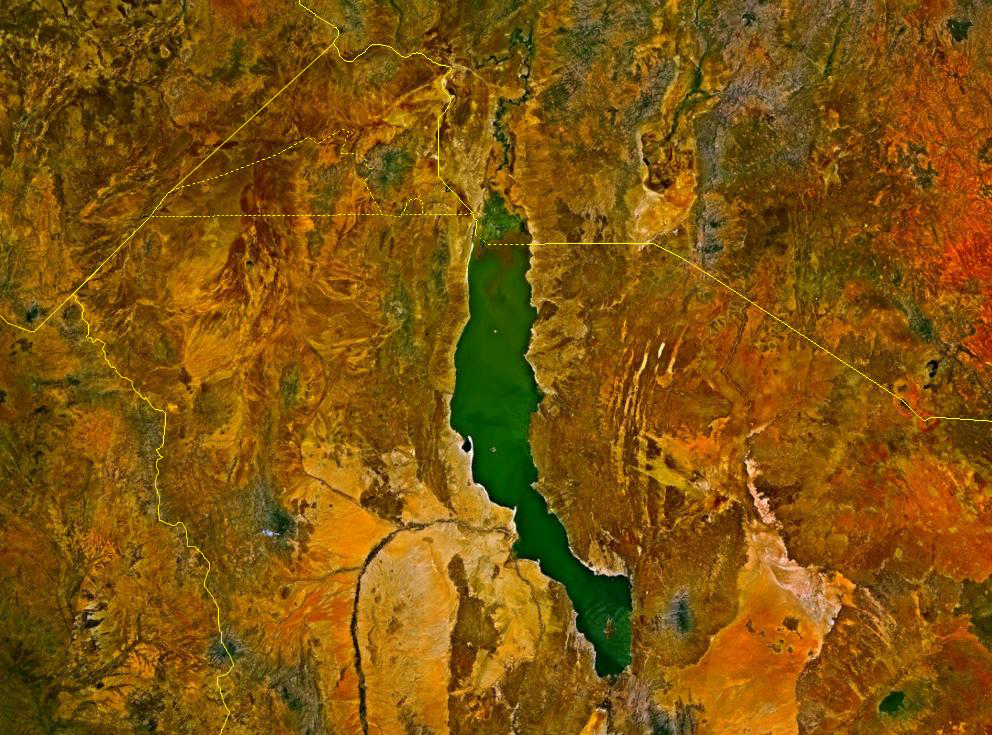|
List Of Ecoregions In Kenya
The following is a list of ecoregions in Kenya, as identified by the Worldwide Fund for Nature (WWF). Terrestrial ecoregions ''by major habitat type'' Tropical and subtropical moist broadleaf forests * East African montane forests * Eastern Arc forests * Northern Zanzibar–Inhambane coastal forest mosaic Tropical and subtropical grasslands, savannas, and shrublands * East Sudanian savanna * Northern Acacia–Commiphora bushlands and thickets * Somali Acacia–Commiphora bushlands and thickets * Southern Acacia–Commiphora bushlands and thickets * Victoria Basin forest–savanna mosaic Flooded grasslands and savannas * East African halophytics Montane grasslands and shrublands * East African montane moorlands Deserts and xeric shrublands * Masai xeric grasslands and shrublands Mangroves * East African mangroves Freshwater ecoregions ''by bioregion'' Nilo-Sudan * Shebele-Juba Catchments * Lake Turkana Great Lakes * Lakes Kivu, Edward, George, and Vi ... [...More Info...] [...Related Items...] OR: [Wikipedia] [Google] [Baidu] |
Ecoregion
An ecoregion (ecological region) or ecozone (ecological zone) is an ecologically and geographically defined area that is smaller than a bioregion, which in turn is smaller than a biogeographic realm. Ecoregions cover relatively large areas of land or water, and contain characteristic, geographically distinct assemblages of natural communities and species. The biodiversity of flora, fauna and ecosystems that characterise an ecoregion tends to be distinct from that of other ecoregions. In theory, biodiversity or conservation ecoregions are relatively large areas of land or water where the probability of encountering different species and communities at any given point remains relatively constant, within an acceptable range of variation (largely undefined at this point). Three caveats are appropriate for all bio-geographic mapping approaches. Firstly, no single bio-geographic framework is optimal for all taxa. Ecoregions reflect the best compromise for as many taxa as possibl ... [...More Info...] [...Related Items...] OR: [Wikipedia] [Google] [Baidu] |
East African Montane Moorlands
The East African montane moorlands is a montane grasslands and shrublands ecoregion which occupies several high mountain peaks in Kenya, South Sudan, Tanzania, and Uganda. Geography The ecoregion occupies an area of , covering several small mountaintop enclaves. These include Mount Elgon on the Uganda-Kenya border, The Aberdare Mountains and Mount Kenya in Kenya, and Mount Meru, Mount Kilimanjaro, and Ngorongoro Crater in Tanzania. The ecoregion occupies areas higher than elevation. Below the montane moorlands is the East African montane forests ecoregion. Flora Plant communities include ericaceous woodland and wooded grassland, ''Dendrosenecio'' woodland and wooded grassland, tussock grassland, ''Helichrysum'' shrub, and swamps or mires. The flora includes many Afroalpine endemic species which are adapted to the harsh conditions. Adaptations include rosette and tussock forms and silvery leaves. From 3500 to 4500 meters elevation plants can grow up to eight meters high, and ... [...More Info...] [...Related Items...] OR: [Wikipedia] [Google] [Baidu] |
Ecoregions Of Kenya
The following is a list of ecoregions in Kenya, as identified by the Worldwide Fund for Nature (WWF). Terrestrial ecoregions ''by major habitat type'' Tropical and subtropical moist broadleaf forests * East African montane forests * Eastern Arc forests * Northern Zanzibar–Inhambane coastal forest mosaic Tropical and subtropical grasslands, savannas, and shrublands * East Sudanian savanna * Northern Acacia–Commiphora bushlands and thickets * Somali Acacia–Commiphora bushlands and thickets * Southern Acacia–Commiphora bushlands and thickets * Victoria Basin forest–savanna mosaic Flooded grasslands and savannas * East African halophytics Montane grasslands and shrublands * East African montane moorlands Deserts and xeric shrublands * Masai xeric grasslands and shrublands Mangroves * East African mangroves Freshwater ecoregions ''by bioregion'' Nilo-Sudan * Shebele-Juba Catchments * Lake Turkana Great Lakes * Lakes Kivu, Edward, George, and Victoria Easter ... [...More Info...] [...Related Items...] OR: [Wikipedia] [Google] [Baidu] |
Environment Of Kenya
Environmental issues in Kenya include deforestation, soil erosion, desertification, water shortage and degraded water quality, flooding, poaching, and domestic and industrial pollution. Water resources Water resources in Kenya are under pressure from agricultural chemicals and urban and industrial wastes, as well as from use for hydroelectric power. The anticipated water shortage is a potential problem for the future. For example, the damming of the Omo river by the Gilgel Gibe III Dam together with the plan to use 30% to 50% of the water for sugar plantations will create significant environmental problems. Up to 50% of Lake Turkana's water capacity will be lost. Had there been no planning of the irrigation of sugar plantations, the dam itself might have had a net positive effect to the environment, due to the emission-less power generation of the dam. Water-quality in Kenya has problems in lakes, (including water hyacinth infestation in Lake Victoria), have contributed to a sub ... [...More Info...] [...Related Items...] OR: [Wikipedia] [Google] [Baidu] |
East African Coral Coast
The East African coral coast is a marine ecoregion along the eastern coast of Africa. It extends along the coasts of Kenya, Tanzania, and northern Mozambique, from Lamu in Kenya (2º30' S) to Angoche in Mozambique (16°14 S). It adjoins the Northern Monsoon Current Coast ecoregion to the north, and the Bight of Sofala/Swamp Coast ecoregion to the south. Major habitat types Fringing coral reefs extend along much of the coast, extending .5 to 2 km from the shore on the narrow continental shelf. Fringing reefs extend along the coasts of Kenya and Tanzania as far as the Ruvuma River, which forms the Tanzania-Mozambique boundary. The fringing reefs are interrupted by major river mouths, including the Tana and Athi rivers in Kenya and the Rufiji in Tanzania. Unguja Island has a fringing reef along its eastern shore and extending around the southern and northern tips of the island. Mafia Island has a fringing reef along its eastern shore which extends south to the Songo Songo Isl ... [...More Info...] [...Related Items...] OR: [Wikipedia] [Google] [Baidu] |
Southern Eastern Rift
The Southern Eastern Rift is a freshwater ecoregion in Kenya and Tanzania. It occupies the southern end of the Eastern Rift Valley, or Gregory Rift, and includes a number of closed or endorheic basins which drain into central lakes with no outlet to the sea. The Southern Eastern Rift extends 700 km, from central Kenya to Central Tanzania. The Eastern Rift Valley is 50 to 100 km wide for most of its length, but widens out at its southern end. The lake basins are, from north to south, Lake Baringo, Lake Bogoria, Lake Nakuru, Lake Naivasha, Lake Elementaita, and Lake Magadi in Kenya, and Lake Natron, Lake Manyara, Lake Burungi, Lake Eyasi, Lake Kitangiri, Lake Balangida, Lake Singida, and Lake Sulunga in Tanzania."Southern Eastern Rift" "Freshwater Ecoregions of the World". Accessed 19 September 2019/ref> In the Kenyan portion of the Southern Eastern Rift, Northern Acacia–Commiphora bushlands and thickets occupies the rift valley floor, with East African montane forest ... [...More Info...] [...Related Items...] OR: [Wikipedia] [Google] [Baidu] |
Pangani River
The Pangani River (pin-gi'nee) (also called Luffu and Jipe Ruvu, especially in older sources, and probably once called Rhaptus) is a major river of northeastern Tanzania. It has two main sources: the Ruvu, which rises as Lumi at Kilimanjaro, passes through Lake Jipe, and empties into the Nyumba ya Mungu Reservoir, and the Kikuletwa, coming from the west and mainly fed by Mount Meru in Arusha Region, which also enters into the Nyumba ya Mungu Reservoir in Kilimanjaro Region. Just after leaving the reservoir the stream becomes the main Pangani, which empties into the Indian Ocean in Tanga Region at the Tangan port town of Pangani. For much of its length the river flows along the regional borders of Kilimanjaro Region and Manyara Region, before flowing into Tanga Region, which contains the 68 MW Pangani Power Station and the Pangani Falls Dam. There are several inhabited islands within the river. The river is full of crocodiles; hippopotami are scarcer in its lower parts. ... [...More Info...] [...Related Items...] OR: [Wikipedia] [Google] [Baidu] |
Kenyan Coastal Rivers
) , national_anthem = " Ee Mungu Nguvu Yetu"() , image_map = , map_caption = , image_map2 = , capital = Nairobi , coordinates = , largest_city = Nairobi , official_languages = Constitution (2009) Art. 7 ational, official and other languages"(1) The national language of the Republic is Swahili. (2) The official languages of the Republic are Swahili and English. (3) The State shall–-–- (a) promote and protect the diversity of language of the people of Kenya; and (b) promote the development and use of indigenous languages, Kenyan Sign language, Braille and other communication formats and technologies accessible to persons with disabilities." , languages_type = National language , languages = Swahili , ethnic_groups = , ethnic_groups_year = 2019 census , religion = , religion_year = 2019 census , demonym = ... [...More Info...] [...Related Items...] OR: [Wikipedia] [Google] [Baidu] |
Lakes Kivu, Edward, George, And Victoria
A lake is an area filled with water, localized in a basin, surrounded by land, and distinct from any river or other outlet that serves to feed or drain the lake. Lakes lie on land and are not part of the ocean, although, like the much larger oceans, they do form part of the Earth's water cycle. Lakes are distinct from lagoons, which are generally coastal parts of the ocean. Lakes are typically larger and deeper than ponds, which also lie on land, though there are no official or scientific definitions. Lakes can be contrasted with rivers or streams, which usually flow in a channel on land. Most lakes are fed and drained by rivers and streams. Natural lakes are generally found in mountainous areas, rift zones, and areas with ongoing glaciation. Other lakes are found in endorheic basins or along the courses of mature rivers, where a river channel has widened into a basin. Some parts of the world have many lakes formed by the chaotic drainage patterns left over from the last ic ... [...More Info...] [...Related Items...] OR: [Wikipedia] [Google] [Baidu] |
Lake Turkana
Lake Turkana (), formerly known as Lake Rudolf, is a lake in the Kenyan Rift Valley, in northern Kenya, with its far northern end crossing into Ethiopia. It is the world's largest permanent desert lake and the world's largest alkaline lake. By volume it is the world's fourth-largest salt lake after the Caspian Sea, Issyk-Kul, and Lake Van (passing the shrinking South Aral Sea), and among all lakes it ranks 24th. Lake Turkana is now threatened by the construction of Gilgel Gibe III Dam in Ethiopia due to the damming of the Omo river which supplies most of the lake's water. Although the lake commonly has been —and to some degree still is— used for drinking water, its salinity (slightly brackish) and very high levels of fluoride (much higher than in fluoridated water) generally make it unsuitable, and it has also been a source of diseases spread by contaminated water. Increasingly, communities on the lake's shores rely on underground springs for drinking water. The ... [...More Info...] [...Related Items...] OR: [Wikipedia] [Google] [Baidu] |
East African Mangroves
East or Orient is one of the four cardinal directions or points of the compass. It is the opposite direction from west and is the direction from which the Sun rises on the Earth. Etymology As in other languages, the word is formed from the fact that east is the direction where the Sun rises: ''east'' comes from Middle English ''est'', from Old English ''ēast'', which itself comes from the Proto-Germanic *''aus-to-'' or *''austra-'' "east, toward the sunrise", from Proto-Indo-European *aus- "to shine," or "dawn", cognate with Old High German ''*ōstar'' "to the east", Latin ''aurora'' 'dawn', and Greek ''ēōs'' 'dawn, east'. Examples of the same formation in other languages include Latin oriens 'east, sunrise' from orior 'to rise, to originate', Greek ανατολή anatolé 'east' from ἀνατέλλω 'to rise' and Hebrew מִזְרָח mizraḥ 'east' from זָרַח zaraḥ 'to rise, to shine'. ''Ēostre'', a Germanic goddess of dawn, might have been a personification ... [...More Info...] [...Related Items...] OR: [Wikipedia] [Google] [Baidu] |




